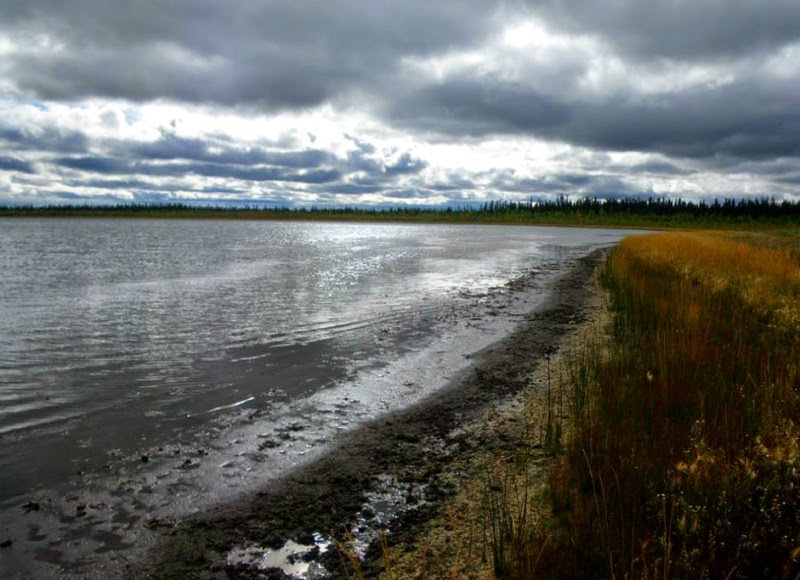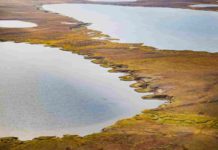
Researchers from McGill and the U.S. Geological Survey, more used to measuring thawing permafrost than its expansion, have made a surprising discovery. There is new permafrost forming around Twelvemile Lake in the interior of Alaska. But they have also quickly concluded that, given the current rate of climate change, it won’t last beyond the end of this century.
Twelvemile Lake, and many others like it, is disappearing. Over the past thirty years, as a result of climate change and thawing permafrost, the lake water has been receding at an alarming rate. It is now 5 metres or 15 feet shallower than it would have been three decades ago. This is a big change in a very short time.
As the lake recedes, bands of willow shrubs have grown up on the newly exposed lake shores over the past twenty years. What Martin Briggs from the U.S. Geological Survey and Prof. Jeffrey McKenzie from McGill’s Dept. of Earth and Planetary Science have just discovered is that the extra shade provided by these willow shrubs has both cooled and dried the surrounding soil, allowing new permafrost to expand beneath them.
The researchers were initially very excited by this find. But after analyzing the thickness of the new permafrost and projecting how it will be affected by continued climate change and the expected rise in temperature in the Arctic of 3°C, they arrived at the conclusion that the new permafrost won’t last beyond the end of the century.
Journal Reference:
Martin A. Briggs, Michelle A. Walvoord, Jeffrey M. McKenzie, Clifford I. Voss, Frederick D. Day-Lewis, John W. Lane. New permafrost is forming around shrinking Arctic lakes, but will it last? Geophysical Research Letters, 2014; 41 (5): 1585 DOI: 10.1002/2014GL059251
Note : The above story is based on materials provided by McGill University.










